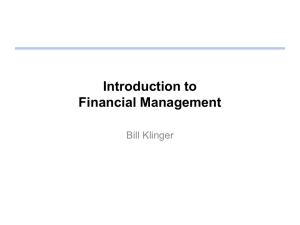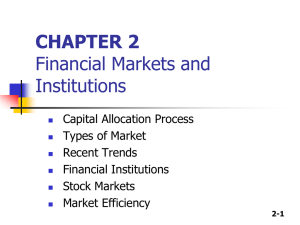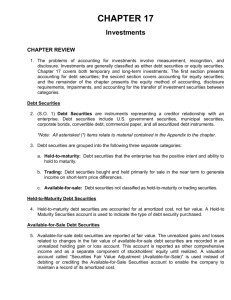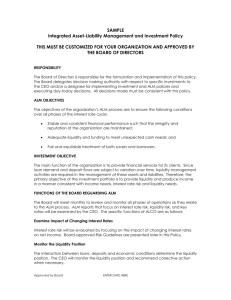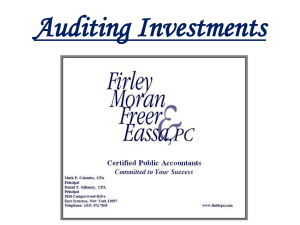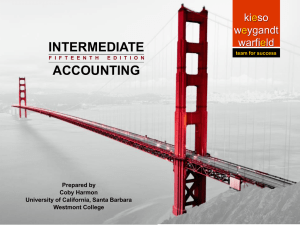The Role of Financial Markets and Institutions(1)
advertisement
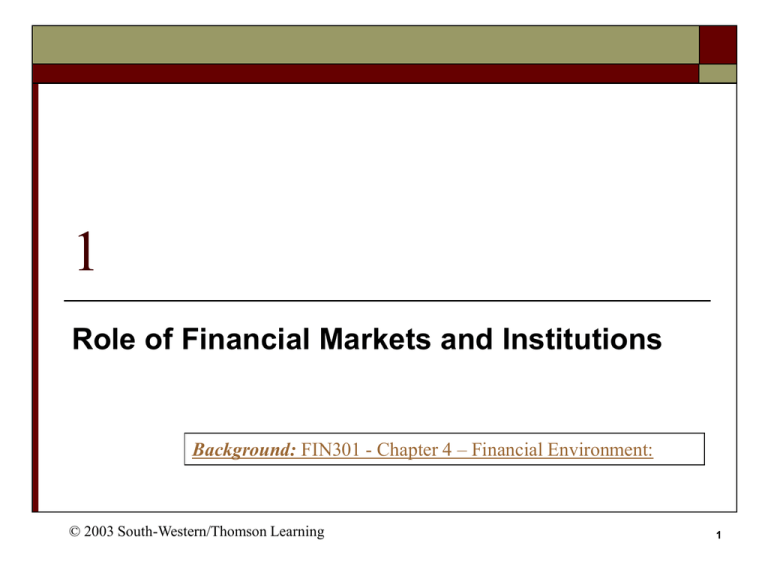
1 Role of Financial Markets and Institutions Background: FIN301 - Chapter 4 – Financial Environment: © 2003 South-Western/Thomson Learning 1 Chapter Objectives 1. Describe the types of financial markets 2. Describe the role of financial institutions with financial markets 3. Identify the types of financial institutions that facilitate transactions 2 Overview of Financial Markets Financial Market: a market in which financial assets (securities) such as stocks and bonds can be purchased or sold Financial markets provide for financial intermediation--financial savings (Surplus Units) to investment (Deficit Units) Financial markets provide payments system Financial markets provide means to manage risk 3 Overview of Financial Markets Broad Classifications of Financial Markets Money versus Capital Markets Primary versus Secondary Markets Organized versus Over-the-Counter Markets Public vs. Corporate 4 Primary vs. Secondary Markets PRIMARY SECONDARY New Issue of Securities Trading Previously Issued Securities Exchange of Funds for Financial Claim No New Funds for Issuer Funds for Borrower; an IOU for Lender Provides Liquidity for Seller 5 Money vs. Capital Markets Money Capital Short-Term, < 1 Year Long-Term, >1Yr High Quality Issuers Range of Issuer Quality Debt Only Debt and Equity Primary Market Focus Liquidity Market--Low Returns Secondary Market Focus Financing Investment-6 Higher Returns Organized vs. Over-the-Counter Markets Organized Visible Marketplace Members Trade Securities Listed New York Stock Exchange OTC Wired Network of Dealers No Central, Physical Location All Securities Traded off the Exchanges 7 Securities Traded in Financial Markets Money Market Securities Capital market securities Debt securities Only Debt and equity securities Derivative Securities Financial contracts whose value is derived from the values of underlying assets Used for hedging (risk reduction) and speculation (risk seeking) 8 Financial Markets Video Clip – Types Financial Markets Vidoe Clip - Derivatives 9 Debt vs. Equity Securities Debt Securities: Contractual obligations (IOU) of Debtor (borrower) to Creditor (lender) Investor receives interest Capital gain/loss when sold Maturity date Equity Securities: Claim with ownership rights and responsibilities Investor receives dividends if declared Capital gain/loss when sold No maturity date—need market to sell 10 Valuation of Securities Value a function of: Future cash flows When cash flows are received Risk of cash flows Present value of cash flows discounted at the market required rate of return Value determined by market demand/supply Value changes with new information 11 Financial Market Efficiency Security prices reflect available information New information is quickly included in security prices Investors balance liquidity, risk, and return needs 12 Financial Market Regulation Why Government Regulation? To Promote Efficiency High level of competition Efficient payments mechanism 13 Low cost risk management contracts Financial Market Regulation Why Government Regulation? To Maintain Financial Market Stability Prevent market crashes Circuit breakers Federal Reserve discount window Prevent Inflation--Monetary policy Prevent Excessive Risk Taking by Financial Institutions 14 Financial Market Regulation Why Government Regulation? To Provide Consumer Protection Provide adequate disclosure Set rules for business conduct To Pursue Social Policies Transfer income and wealth Allocate saving to socially desirable areas Housing Student loans 15 Financial Market Globalization Increased international funds flow Increased disclosure of information Reduced transaction costs Reduced foreign regulation on capital flows Increased privatization Results: Increased financial integration--capital flows to highest expected risk-adjusted return 16 Role of Financial Institutions in Financial Markets Information processing Serve special needs of lenders (liabilities) and borrowers (assets) By denomination and term By risk and return Lower transaction cost Serve to resolve problems of market imperfection 17 Role of Financial Institutions in Financial Markets Types of Depository Financial Institutions Commercial Banks $5 Trillion Total Assets Savings Institutions $1.3 Trillion Total Assets Credit Unions $.5 Trillion Total Assets 18 Types of Non-depository Financial Institutions Finance companies Mutual funds Securities companies Insurance companies Pension funds Security pools 19 Role of Non-depository Financial Institutions Focused on capital market Longer-term, higher risk intermediation Less focus on liquidity Less regulation Greater focus on equity investments 20 Trends in Financial Institutions Increased competition between financial Institutions In the 60’s & 70’s, heavy regulation prevented competition In the late 70’s & 80’s, the development of mutual funds and deregulation led to increased flexibility and competition. This continued through to the 90’s and into today. Increased consolidation of financial institutions via mergers has resulted in the growth of financial conglomerates e.g. Cayman National Corporation 21 Cayman Financial Corporation CNC CNB CNP CNT CNS Caymanx CNI CNIB CGI CNIM 22 Cayman National Corporation Holding Company CNB – Cayman National Bank – Banking CNP – Cayman National Property Holding – Property Holding CNT – Cayman National Trust - Company & Trust Management CNS – Cayman National Securities - Securities Brokerage Caymanx – Caymanx Trust Company Limited – Banking, company and trust management CNI – Cayman National Investments – Investment in a merchant bank CNIB – Cayman National Insurance Brokers – Insurance brokerage CGI – Cayman General Insurance – General (property & casualty) and heath insurance CNIM – Cayman National Insurance Management - General (property & casualty) and heath insurance 23 Global Expansion by Financial Institutions International expansion through mergers and emerging markets The single European currency – Euro, €, helped to eliminate concerns about foreign exchange risks 24


